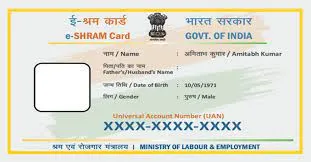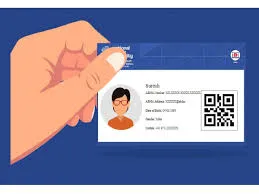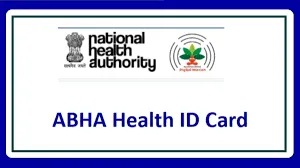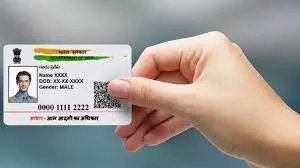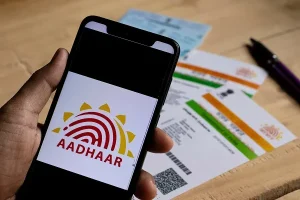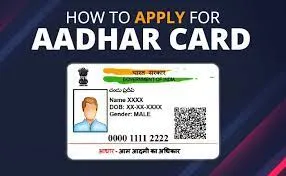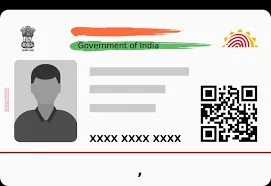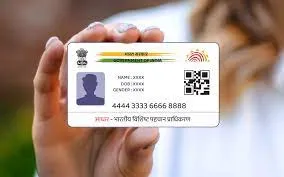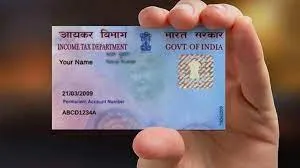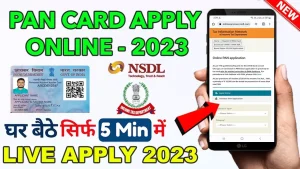Applying for a New e-Shram Card: Empowering Unorganized Sector Workers
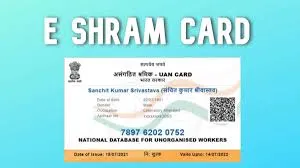
The e-Shram card, introduced by the Government of India, is a digital identification card aimed at providing social security benefits and welfare schemes to workers in the unorganized sector. This article serves as a comprehensive guide to understanding the process of applying for a new e-Shram card, empowering unorganized sector workers with access to essential government benefits and services.
Introduction to e-Shram Card:
The e-Shram card initiative is a significant step towards extending social security coverage to the vast workforce employed in the unorganized sector. It seeks to address the challenges faced by workers in sectors such as construction, manufacturing, agriculture, domestic work, and more, by providing them with a unique identification card that facilitates access to various welfare schemes and benefits.
Eligibility Criteria:
Before applying for a new e-Shram card, it is essential to ensure that you meet the eligibility criteria set by the government. Eligible individuals typically include workers engaged in informal or unorganized sector activities, such as construction laborers, street vendors, domestic workers, agricultural workers, rickshaw pullers, and others. The eligibility criteria may vary slightly depending on the state or region.
Document Preparation:
Gathering the necessary documents is the first step in the e-Shram card application process. Applicants are usually required to provide proof of identity, proof of address, and any other documents specified by the authorities. Commonly accepted documents include Aadhaar card, PAN card, voter ID, passport, ration card, utility bills, and bank statements.
Online Registration:
The e-Shram card application process begins with online registration on the official e-Shram portal or designated enrollment centers. Applicants need to complete the online registration form with accurate personal details, contact information, and employment-related information. It is crucial to double-check the information provided to ensure accuracy and completeness.
Document Upload:
After completing the online registration, applicants are required to upload scanned copies of the required documents as per the instructions provided. The documents should be clear, legible, and meet the specified file size and format requirements. Document upload is a critical step in the application process, as it verifies the applicant’s identity and eligibility.
Biometric Verification:
Once the online registration and document upload are completed, applicants need to visit the nearest enrollment center or authorized service provider for biometric verification. During this process, the applicant’s fingerprints and other biometric data are captured to verify their identity. Biometric verification adds an additional layer of security to the e-Shram card enrollment process.
Acknowledgment Receipt:
Upon successful submission of the application and biometric verification, applicants receive an acknowledgment receipt containing a unique enrollment ID. This receipt serves as proof of application and should be kept safe for future reference. The enrollment ID allows applicants to track the status of their application online through the e-Shram portal.
Application Processing:
The authorities process the e-Shram card applications after verifying the submitted documents and biometric data. The processing time may vary depending on the volume of applications received and the efficiency of the verification process. Applicants can track the status of their application online using the enrollment ID provided in the acknowledgment receipt.
Card Issuance:
Once the application is approved, applicants receive the e-Shram card electronically through the designated portal or mobile application. The e-Shram card contains essential details such as the holder’s name, photograph, unique identification number, and other relevant information. The card serves as proof of identity and facilitates access to various government benefits and services.
Avail Benefits:
With the e-Shram card in hand, beneficiaries can now avail themselves of various social security benefits and welfare schemes provided by the government for unorganized sector workers. These benefits may include insurance coverage, health benefits, pension schemes, maternity benefits, disability benefits, and more. The e-Shram card empowers workers with access to essential support systems to safeguard their well-being and livelihood.
Conclusion:
The e-Shram card initiative plays a crucial role in extending social security coverage to the unorganized sector workforce, addressing their longstanding vulnerabilities and challenges. By simplifying the application process and providing access to essential benefits and services, the e-Shram card empowers workers with a sense of security and dignity. It represents a significant step towards building a more inclusive and equitable society where every worker has access to the support they need to thrive.
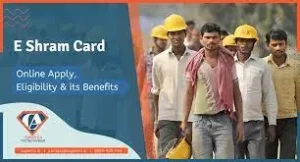
E-Shram Card: Empowering Unorganized Sector Workers
The e-Shram card, introduced by the Government of India, is a digital identification card aimed at providing social security benefits and welfare schemes to workers in the unorganized sector. Here are the key details about the e-Shram card:
Purpose:
The primary purpose of the e-Shram card is to extend social security coverage to workers employed in the unorganized sector. It aims to provide them with access to various government benefits and services, including insurance coverage, health benefits, pension schemes, maternity benefits, disability benefits, and more.
Eligibility:
Workers engaged in informal or unorganized sector activities, such as construction laborers, street vendors, domestic workers, agricultural workers, rickshaw pullers, and others, are eligible to apply for the e-Shram card. The eligibility criteria may vary slightly depending on the state or region.
Identification:
The e-Shram card serves as a unique identification card for the holder, containing essential details such as their name, photograph, date of birth, gender, occupation, address, and a unique identification number. The card helps authorities verify the identity of workers and facilitate the delivery of social security benefits and services.
Application Process:
The application process for the e-Shram card is typically conducted online through the official e-Shram portal or designated enrollment centers. Applicants need to complete the online registration form, upload scanned copies of required documents, undergo biometric verification, and receive an acknowledgment receipt containing a unique enrollment ID.
Benefits:
Once the e-Shram card is issued, beneficiaries can avail themselves of various social security benefits and welfare schemes provided by the government. These benefits may include insurance coverage for accidents and disabilities, health benefits for medical treatment and hospitalization, pension schemes for old age security, maternity benefits for women, and more.
Card Issuance:
The e-Shram card is issued electronically to the beneficiaries through the designated portal or mobile application. The card can be downloaded and stored digitally on a smartphone or printed for physical possession. Beneficiaries should ensure that they keep the e-Shram card safe and accessible for future reference.
Validity:
The e-Shram card is typically valid for a specified period, after which beneficiaries may need to renew or update their information to maintain eligibility for social security benefits. It is essential for cardholders to stay informed about any changes in eligibility criteria or renewal procedures to avoid disruptions in benefits.
Access to Services:
With the e-Shram card, beneficiaries can access various government services and welfare schemes seamlessly. The card serves as proof of identity and eligibility for availing benefits, simplifying the process of accessing support systems and improving the overall well-being of workers in the unorganized sector.
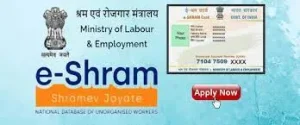
Scheme name | e-Shram Card |
Launched by | Ministry of Labor and Employment |
Start date | August 2021 |
Beneficiaries | Unorganised sector workers |
Pension benefits | Rs.3,000 per month |
Insurance benefits | Death insurance of Rs.2 lakh Rs.1 lakh for partial handicap |
Age limits | 16-59 years |
Official website | |
Helpline number | 14434 |
Benefits of e-Shram Card for Unorganized Sector Workers
The e-Shram card initiative by the Government of India aims to provide social security benefits and welfare schemes to workers in the unorganized sector. Here are some key benefits of the e-Shram card for beneficiaries:
Insurance Coverage:
The e-Shram card provides beneficiaries with insurance coverage against accidents and disabilities. In the event of an unfortunate incident resulting in injury or disability, beneficiaries and their families receive financial assistance to cover medical expenses and loss of income.
Health Benefits:
Beneficiaries of the e-Shram card are entitled to health benefits, including access to medical treatment and hospitalization services. The card helps ensure that workers in the unorganized sector receive timely and affordable healthcare, improving their overall well-being and productivity.
Pension Schemes:
The e-Shram card facilitates enrollment in pension schemes designed to provide old age security to beneficiaries. Upon reaching retirement age, beneficiaries receive regular pension payments to support their financial needs and maintain a decent standard of living in their golden years.
Maternity Benefits:
Women beneficiaries of the e-Shram card are eligible for maternity benefits to support them during pregnancy and childbirth. The card provides financial assistance for prenatal care, delivery expenses, and postnatal care, ensuring that mothers and their newborns receive the necessary support and healthcare services.
Disability Benefits:
In case of permanent disability due to accidents or injuries, beneficiaries of the e-Shram card receive disability benefits to help them cope with the challenges and expenses associated with their condition. The benefits include financial assistance, rehabilitation services, and vocational training to facilitate their integration into society.
Financial Security:
By providing access to social security benefits and welfare schemes, the e-Shram card offers beneficiaries a sense of financial security and stability. The card helps mitigate the risks and uncertainties faced by workers in the unorganized sector, ensuring that they and their families are protected against unforeseen circumstances.
Empowerment:
The e-Shram card empowers beneficiaries by giving them access to government support systems and services that were previously inaccessible. By availing themselves of benefits such as insurance coverage, healthcare services, and pension schemes, beneficiaries can improve their quality of life and achieve greater economic independence.
Inclusion:
The e-Shram card initiative promotes inclusivity by extending social security coverage to workers in the unorganized sector, who are often marginalized and underserved. By addressing the needs of this vulnerable population, the initiative contributes to building a more equitable and inclusive society.

